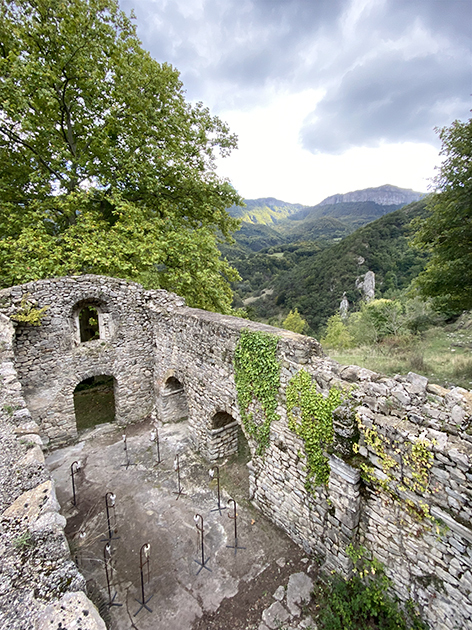We got the opportunity to talk to Hanna-Mari Hammari about her inspiration, work process, and experience at the artistic residency at Moly-Sabata.
You started your artistic career as a photographer, how did you transition from photography to ceramics?
Image-making is still very much at the core of my artistic practice, even if I have not worked in photography in a concentrated manner for a while. I think in images first, language comes later.
My practice relies a lot on observation. As a young artist, photography was the medium that allowed me to work with this instinct in the most direct manner. Observing what already exists and making something new out of it. It was rather basic.
The shift from photography to sculpture happened very organically during my time in art school: I realized that I enjoyed materials, craft and objects that exist in the space with us much more than I enjoyed their two-dimensional representations. That being said, photography is having a little bit of a revival for me, and I find myself being quite interested in working with it again. Who knows, perhaps in a year or two, I’ll be back at it!
What kind of meaning does material have in your artistic process? How do you choose the materials you work with ?
Materiality and the medium are of course crucial to most works of art. It’s hard to give a comprehensive answer to why I chose a certain material, it depends on the project. The work I made during the residency consists of glazed ceramics and found steel objects I collected from different flea markets in France. Both are materials that I have frequently used before, but as I was doing work for the outdoors, I needed things to be weatherproof and durable, etc. From the constraints or the circumstance one gives oneself, you start the process of actually figuring out what the works are going to be.
Where do you find inspiration for your work? What is your biggest source of inspiration? How do ideas for your work form? How does your work process advance/proceed from there?
Inspiration is something that is not so easy to pin down, it’s kind of everywhere at all times but mostly it’s in the studio, in the process. I don’t work in a very “causal” manner, as in I read and look at a lot of things but I don’t think they immediately translate into the work. It’s more that they feed the intuition, which is a type of deep memory well that informs one’s decisions going forward. I like looking at art from all ages, reading poetry, I am very interested in vernacular design, meaning basically objects of almost any kind. I thoroughly enjoy flea market displays, the juxtaposition of the most unrelated things. I have a very large collection of special flea market finds that have definitely been a huge inspiration.
How was your experience in the artist residency at Moly-Sabata? What are your expectations for the Sillon Festival where your new artwork will be showcased?
My practice is heavy on process, and I develop my works through a lot of material exploration (objects are also materials, of course) and trying out different techniques and things. I rarely know what my sculptures look like until I have completed them, and am sometimes rather surprised by the outcome. Because of this, practically preparing in the form of collecting the right materials and making sure I can work with certain technical things is hard to plan out and prepare for perfectly. This has made working in a residency out from an empty studio with limited access to equipment sometimes challenging. I am sure working outside of my comfort zone has been productive in many ways, although sometimes it has felt like a black hole, where all energy and effort disappear. While in Moly-Sabata, I have tried to be open to new influences of the area, and have collected some very exciting materials and vernacular objects that I probably would not have come across were it not for my residency here in semi-rural France. I am sure these materials are going to make appearances in my future works, in one way or another.
In the Festival Sillon, I am showcasing for the first time what could be called a type of public sculpture: my works are exhibited in the ruins of an old church, where they are entirely exposed to the forces of nature as well as accessible to the public at all times. Having to think on a different scale and to try to create work that is not too fragile was an interesting challenge for me, as the space could not have been further from a white cube. One wants to add to the space and not try to compete with it. My expectation from the festival is to see if the new work succeeds within its very special setup and of course, for the public to hopefully get something out of the experience too.
